#bkminterns
Explore tagged Tumblr posts
Photo


Spend your spring semester with us! Applications for our spring internship program are now open!
This internship session will run from January 27 to May 5, 2023. Learn more about these part-time, paid internship opportunities below and be sure to submit your application before November 6.
Note: This program is open to undergraduate and graduate students, as well as adults who aren’t enrolled in higher education and who are at least 22 years of age. Recent graduates are also eligible to apply. International students who are authorized to work in the U.S. are welcome to apply.
🔗 https://bit.ly/3Cy9xrC
#Brooklyn Museum#brooklyn#museum#art#exhibition#internship#art interns#art jobs#job opportunities#art careers#museum careers#bkminterns#nyc
11 notes
·
View notes
Photo

Howdy. This summer I’m interning in the Marketing & Communications department in the Brooklyn Museum (~~***exciting***~~). Each week I’ll be posting weekly updates from the program on the museum’s blog and reposting them here. Check out the first one!
#art#museum#brooklyn#stonewall50#stonewall#intern#internship#nobobdypromisedyoutomorrow#brooklyn museum#heritage#kwangyoungchun#aggregations#summer#bkminterns
0 notes
Photo
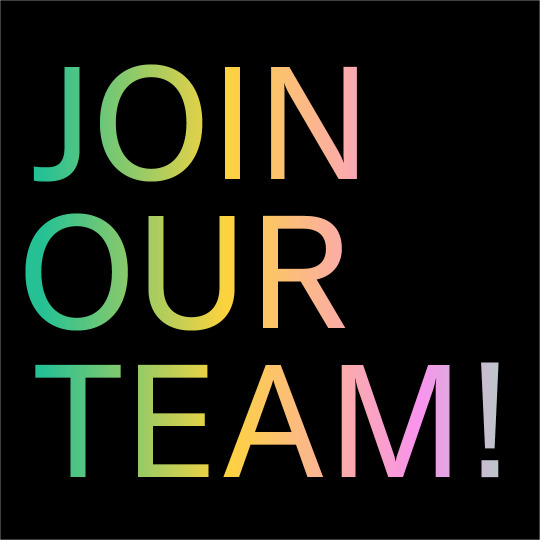
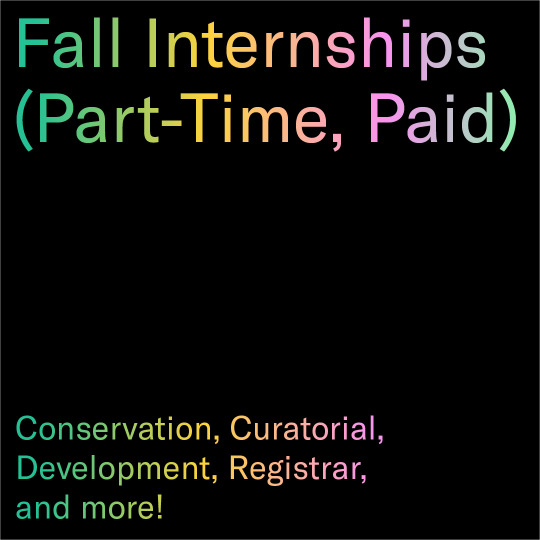
ICYMI: Applications for our fall internship program are now open!
Our fall internship will run from September 23 to December 2. As an intern, you’ll have the opportunity to learn from, and work with, experts from all areas of the Museum.
Learn more about these part-time, paid internship opportunities and be sure to submit your application before July 17.
🔗 https://bit.ly/bkminternships
#Brooklyn Museum#brooklyn#museum#bkmcareers#bkminterns#internship#nyc#art#job opportunities#art jobs
12 notes
·
View notes
Photo
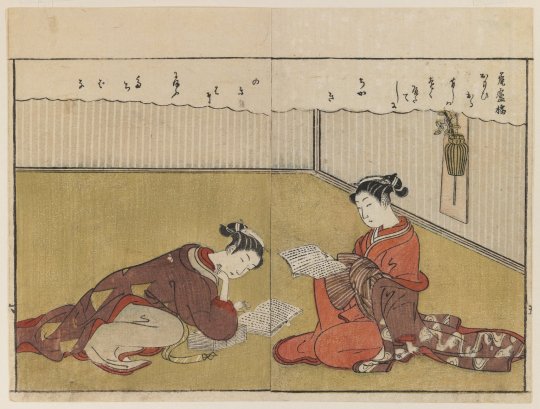
Closing out National Poetry Month, our Spring Interns paired some of their favorite poems with works from our collection. We hope you enjoy!
— Jeffrey Alexander Lopez, Curatorial Intern, American Art & Arts of the Americas
Image: Suzuki Harunobu (Japanese, 1724-1770). Page From Haru no Nishiki, 1771. Color woodblock print on paper. Brooklyn Museum, Gift of Peter P. Pessutti, 83.190.1
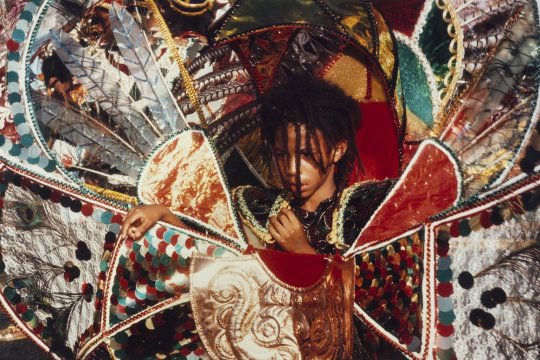
from Citizen: “Some years there exists a wanting to escape...” [Excerpt] By Claudia Rankine
/
I they he she we you turn only to discover the encounter
to be alien to this place.
Wait.
The patience is in the living. Time opens out to you.
The opening, between you and you, occupied, zoned for an encounter,
given the histories of you and you—
And always, who is this you?
The start of you, each day, a presence already—
Hey you—
/
— Halle Smith, Digital Collections Intern Catherine Green (American, born 1952). [Untitled] (West Indian Day Parade), 1991. Chromogenic photograph, sheet. Brooklyn Museum, Gift of the artist, 1991.58.2. © artist or artist's estate
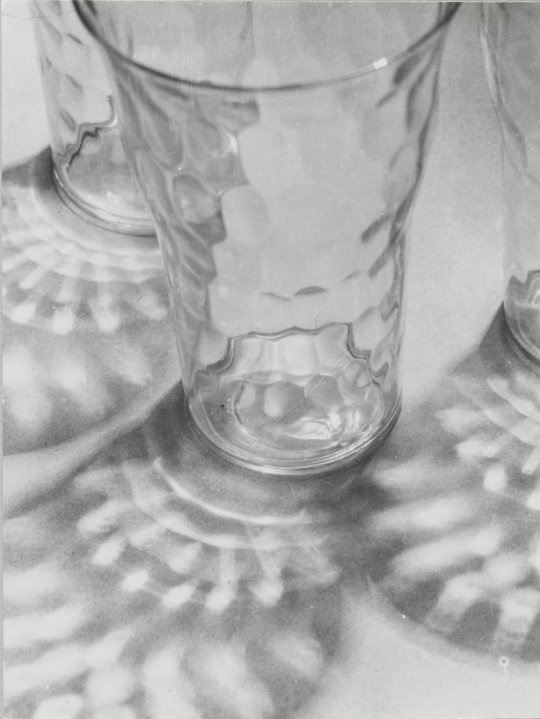
Ode to Enchanted Light by Pablo Neruda
Under the trees light has dropped from the top of the sky, light like a green latticework of branches, shining on every leaf, drifting down like clean white sand.
A cicada sends its sawing song high into the empty air.
The world is a glass overflowing with water.
Consuelo Kanaga’s black and white photograph captures a dazzling, yet fleeting moment from everyday life. Three textured glasses cast shadows whose patterns are almost kaleidoscopic in effect. We can imagine Kanaga passing by her kitchen table, as she is brought to a halt to take a closer look at, and ultimately to photograph, the simple beauty generated by the play of light and everyday objects. The close-up scale of this image emulates the singularizing framing techniques deployed by Surrealist photographers, who also took parts of everyday life and blew them up in the photographic frame, thereby encouraging their viewers to look at life around us from a different angle. It is a way of saying: Here, take a closer look. Viewing the world with wonder, along with the joy that this act brings, are encapsulated in Pablo Neruda’s poem Ode to Enchanted Light. The speaker observes the way light passes through trees and creates enchanting patterns. He not only observes, but feels the beauty in the simple details of life, from the way light falls from the sky, to the sheen of leaves, to the buzzing of cicadas. Approaching life through such a hopeful lens evokes a glass-half-full perspective. In fact, the speaker is so hopeful that he believes “The world is/a glass overflowing/with water.” I think Kanaga would have felt the same way.
— Kirk Testa, Curatorial Intern, Photography Consuelo Kanaga (American, 1894-1978). [Untitled] (Glasses and Reflections). Gelatin silver photograph. Brooklyn Museum, Gift of Wallace B. Putnam from the Estate of Consuelo Kanaga, 82.65.25
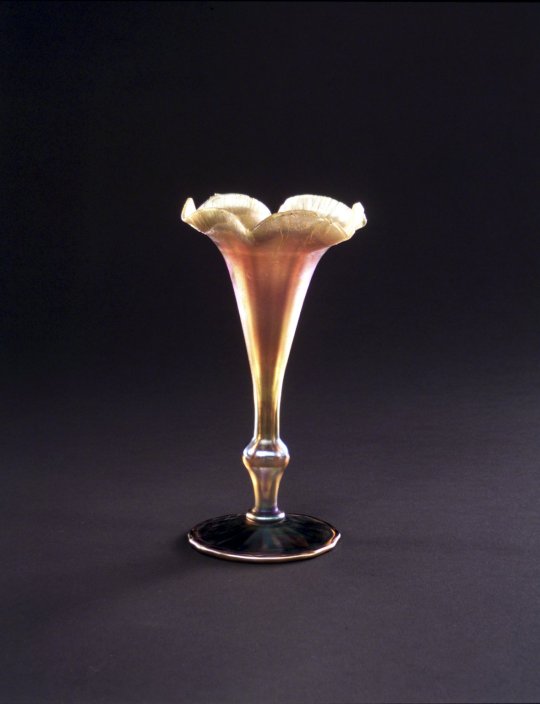
Easter Wings By George Herbert
Lord, who createdst man in wealth and store,
Though foolishly he lost the same,
Decaying more and more,
Till he became
Most poore:
With thee
O let me rise
As larks, harmoniously,
And sing this day thy victories:
Then shall the fall further the flight in me.
My tender age in sorrow did beginne
And still with sicknesses and shame.
Thou didst so punish sinne,
That I became
Most thinne.
With thee
Let me combine,
And feel thy victorie:
For, if I imp my wing on thine,
Affliction shall advance the flight in me.
Easter Wings by George Herbet and Martin Bach’s flower vase from the Brooklyn Museum’s Decorative Arts collection reveal the interrelationship between form and function. In Easter Wings, Herbert strategically varies the line length to create an image that enhances the meaning of the poem; when you turn the poem on its side, it resembles the wings of a bird, of which are symbolic of the atonement of Jesus Christ. In doing so, the author is not only telling us his message, but he is showing it visually as well. Similarly, the vase takes the visual form of its function. Its floral design amplifies the meaning of the object, as the vase is meant to hold flowers. In both instances, we see how aesthetic properties of a work echo the meaning and function of the work itself.
— Amy Zavecz Martin Bach (American, 1862-1921). Vase, ca. 1905. Opalescent glass. Brooklyn Museum, Gift of Mrs. Alfred Zoebisch, 59.143.16. Creative Commons-BY
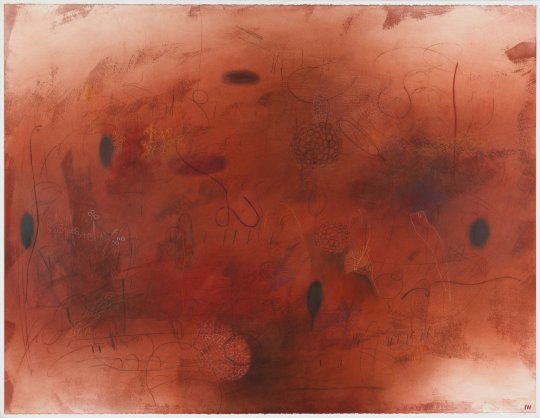
I am the Earth (Watashi wa chikyu) [Excerpt] by Kiyoko Nagase, Translated by Takako Lento
I am warm, moist soil I am a single supple stalk I draw my life all the way up into corollas of wild berries on the roadside
I am amazed at a breast of water welling to flow into the inlet of a muddy rice paddy I am amazed at myself being hot steam blowing fire and sulfur up from the bottom of the great ocean, deep indigo. I am amazed at the crimson blood flow covering the earth’s surface in human shape; I am amazed that it swells as the tides ebb and flow, and gushes out monthly under distant invisible gravity … I am the earth. I live there, and I am the very same earth.
In the four billionth year I have come to know the eternal cold moon, my other self, my hetero being, then, for the first time, I am amazed that I am warm mud.
The vivid imagery conjured up by Kiyoko Nagase’s poem is beautifully visualized by Emmi Whitehorse’s painting. The emphasis on deep Earth tones and abstract corporeality in both the poem and the painting really creates an intense metaphysical link between the environment and the self.
— Amanda Raquel Dorval, Archives Intern Emmi Whitehorse (Navajo, born 1957). Fire Weed, 1998. Chalk, graphite, pastel and oil on paper mounted on canvas. Brooklyn Museum, Gift of Hinrich Peiper and Dorothee Peiper-Riegraf in honor of Emmi Whitehorse, 2006.49. © artist or artist's estate
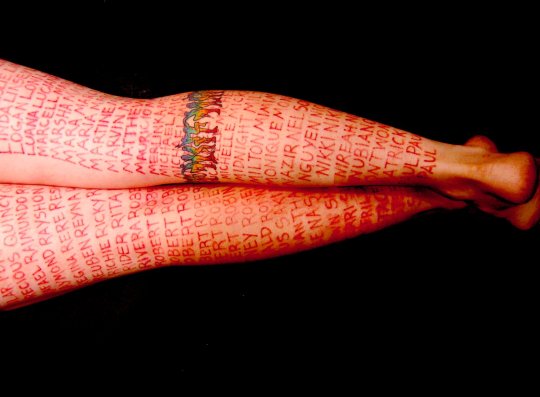
Seventh Circle of Earth by Ocean Vuong
On April 27, 2011, a gay couple, Michael Humphrey and Clayton Capshaw, was murdered by immolation in their home in Dallas, Texas.
Dallas Voice
1
2
3
4
5
6
7
________________________________________________________
As if my finger, / tracing your collarbone / behind closed doors, / was enough / to erase myself. To forget / we built this house knowing / it won’t last. How / does anyone stop / regret / without cutting / off his hands? / Another torch
streams through / the kitchen window, / another errant dove. / It’s funny. I always knew / I’d be warmest beside / my man. / But don’t laugh. Understand me / when I say I burn best / when crowned / with your scent: that earth-sweat / & Old Spice I seek out each night / the days
refuse me. / Our faces blackening / in the photographs along the wall. / Don’t laugh. Just tell me the story / again, / of the sparrows who flew from falling Rome, / their blazed wings. / How ruin nested inside each thimbled throat / & made it sing
until the notes threaded to this / smoke rising / from your nostrils. Speak— / until your voice is nothing / but the crackle / of charred
bones. But don’t laugh / when these walls collapse / & only sparks / not sparrows / fly out. / When they come / to sift through these cinders—& pluck my tongue, / this fisted rose, / charcoaled & choked / from your gone
mouth. / Each black petal / blasted / with what’s left / of our laughter. / Laughter ashed / to air / to honey to baby / darling, / look. Look how happy we are / to be no one / & still
American.
Ocean Vuong’s “Seventh Circle of Earth” has persisted as one of the great, affective moments of poetry in my life since I first heard Pádraig Ó Toama’s gorgeous reading and discussion of it on his podcast, Poetry Unbound. I decided to pair Vuong’s poem with Mary Coble’s Untitled 2 (from Note To Self) because both works are urgently immersive into the violence and experience of LGBTQ people in the U.S., and for how each work uses text and physicality to address presence, pain, and erasure. Vuong’s poem is actually footnoted to a quote from a news article about a gay couple murdered in Texas. The page is thus blank, absent of text. The reader has to sink below the main stage, the accepted space of word and story, to find the voices of this couple and the depth of their story’s tenderness, eroticism, and utter devastation. Coble’s piece foils the structure and effect of Seventh Circle of Earth by taking what was subverted by Vuong—text and the narrative of violence—wholly to the surface. Her photograph captures her own legs tattooed without ink with the names of LGBTQ individuals victimized by hate crimes. I cannot help but think of Franz Kafka’s short story “In the Penal Colony,” in which prisoners’ “sentences'' are inscribed by the needle of a “punishment apparatus” directly onto their bodies. I was struck by how the curator’s note for this photograph describes Coble’s artistic endeavor here as “harrowing.” The needle in Kafka’s short story is indeed called “The Harrow”. The noun harrow is an agricultural tool that combs plowed soil to break up clumps of earth and uproot weeds and clear imperfections. The verb to harrow means to plague, and in the story’s original German the verb for “harrow”, eggen, is also translated as “to torment”. Kafka and Coble conflate these definitions of “the harrow” in their respective works: they use a needled device, like the true noun definition, as an instrument of torment because of someone else’s idea of punishment and justice. Here, violence is brought to the surface, intimate in as much as we are brought right up to the artist’s skin and into the presence of her and her community’s pain. Together, one can see how each creator physicalizes their respective artistic space to tell the stories of LGBTQ people, of what is tender and harrowing, below the surface and written into the skin.
— Talia Abrahams, Provenance Intern, IHCPP Mary Coble (American, born 1978). Untitled 2 (from Note to Self), 2005. Inkjet print. Brooklyn Museum, Gift of the artist, 2008.10. © artist or artist's estate
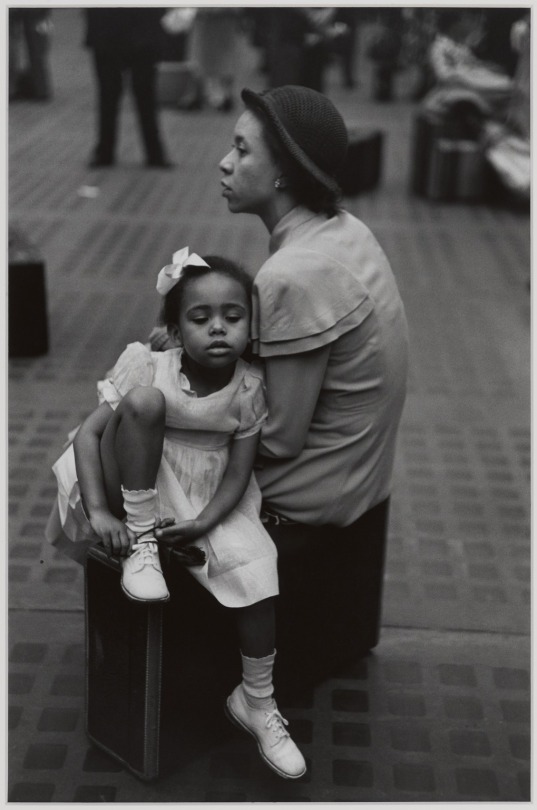
To my daughter Kakuya by Assata Shakur
I have shabby dreams for you of some vague freedom I have never known. Baby I don't want you hungry or thirsty or out in the cold. and I don't want the frost to kill your fruit before it ripens. I can see a sunny place Life exploding green. I can see your bright, bronze skin at ease with all the flowers and the centipedes. I can hear laughter, not grown from ridicule And words not prompted by ego or greed or jealousy. I see a world where hatred has been replaced by love. and ME replaced by WE And I can see a world replaced where you, building and exploring, strong and fulfilled, will understand. And go beyond my little shabby dreams.
This poem is featured in Assata Shakur’s memoir, Assata: An Autobiography. It details her hope for a better world that her daughter can grow up in. This poem is positioned in the book when Shakur is facing increasing prosecution as a result of her activism and affiliations with the Black Panther Party and Black Liberation army. Being written more than 30 years after this picture was taken, the poem summons me to think about the trauma that many Black women face and how much of that trauma gets passed down to their children. The black and white photo of a mother and daughter provides a nice visual to the poem. “The image of a Black mother and child sitting on their luggage reflects the little-discussed history of segregated transportation in the northern United States. Through the 1940s, Penn Station officials assigned Black travelers seats in Jim Crow cars on southbound trains” (Brooklyn Museum). The photograph of train passengers waiting outside of Manhattan’s Pennsylvania Station especially echoes the verse “I don’t want you hungry or thirsty or out in the cold.” The overall optimistic tone of Shakur’s poem alters our relationship to the image as we imagine the mother pictured above hoping for the exact same things
— Zaria W, Teen Programs intern Ruth Orkin (American, 1921-1985). Mother and Daughter at Penn Station, NYC, 1948. Gelatin silver photograph, sheet: 13 15/16 × 11 in. (35.4 × 27.9 cm). Brooklyn Museum, Gift of Mary Engel, 2011.22.3. © artist or artist's estate
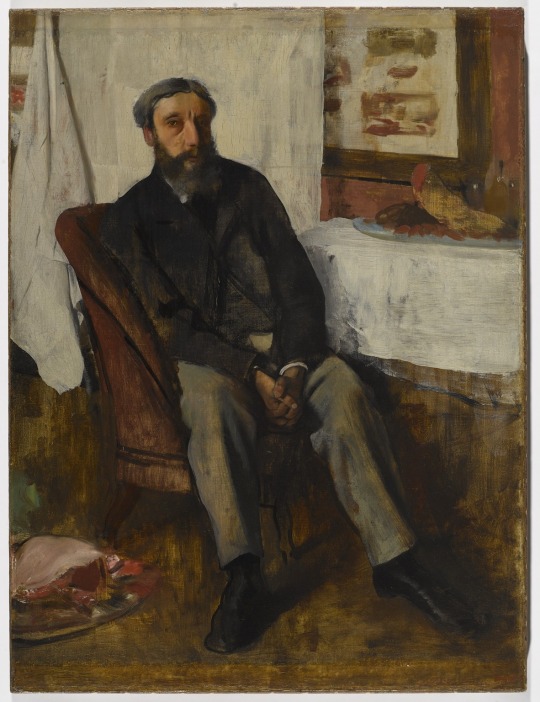
Crunch. By Kailyn Gibson
I retch as a mass of sinew lies between my lips. The sensation is unbearable. Fortunately, the jar of flies has gone missing again.
Slowly, surely, and yet never sure at all, the quiet of buzzing rings through the in-between.
It is a symphony wrought from blood and bone.
Saliva drips from bleeding, hungry gums, And the crunch of glass echoes the grinding of molars.
If I proffered a sanguine smile, would masticated shards look like teeth? Would they gleam just as prettily?
The flies ring, and the rot calls.
— Kailyn Gibson Edgar Degas (French, 1834-1917). Portrait of a Man (Portrait d'homme), ca. 1866. Oil on canvas. Brooklyn Museum, Museum Collection Fund, 21.112
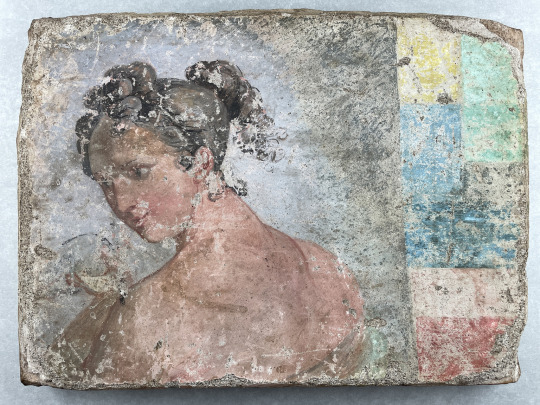
Excerpt from Autobiography of Red A novel in verse by Anne Carson
7. If Helen’s reasons arose out of some remark Stesichoros made either it was a strong remark about Helen’s sexual misconduct (not to say its unsavory aftermath the Fall of Troy) or it was not.
8. If it was a strong remark about Helen’s sexual misconduct (not to say its unsavory aftermath the Fall of Troy) either this remark was a lie or it was not.
9. If it was not a lie either we are now in reverse and by continuing to reason in this way we are likely to arrive back at the beginning of the question of the blinding of Stesichoros or we are not.
10. If we are now in reverse and by continuing to reason in this way are likely to arrive back at the beginning of the question of the blinding of Stesichoros either we will go along without incident or we will meet Stesichoros on our way back.
11. If we meet Stesichoros on our way back either we will keep quiet or we will look him in the eye and ask him what he thinks of Helen.
12. If we look Stesichoros in the eye and ask him what he thinks of Helen either he will tell the truth or he will lie.
13. If Stesichoros lies either we will know at once that he is lying or we will be fooled because now that we are in reverse the whole landscape looks inside out.
This excerpt comes from Appendix C of Anne Carson’s Autobiography of Red, a novel in verse. A translator and classicist herself, Carson mixes fact with fiction in her unconventional retelling of the myth of Geryon and Hercules, beginning with a roundabout introduction to the poet Stesichoros. Autobiography presents a captivating example of recent Queer projects that take up Classical material as their basis. A fascination with the Classical past has pervaded our modern conception of sexual identity politics, down to the very etymology of the word “lesbian.” In this fascination, I see the same desire to capture Classical imagery as cultural heritage which has also pervaded American museums, albeit with significantly different aims. The fresco pictured above comes to mind, which passed through many collectors and was even purchased by the museum before anyone pegged it as a modern piece—not an original Roman fresco. John D. Cooney, a 20th century curator of our Egyptian, Classical, and Ancient Near Eastern Art collection, wrote that “the unclad and somewhat winsome charms of the lady [probably] diverted objective glances.” Both in the case of the fresco and Carson’s novel, the “unclad and somewhat winsome charms” of the Classical past shape and reshape our understanding of history.
— Kira Houston, Curatorial Intern, Egyptian, Classical, and Ancient Near Eastern Art Modern, in the style of the Roman Period. Part of a Fresco, early 19th century C.E. Clay, paint. Brooklyn Museum, Ella C. Woodward Memorial Fund, 11.30.
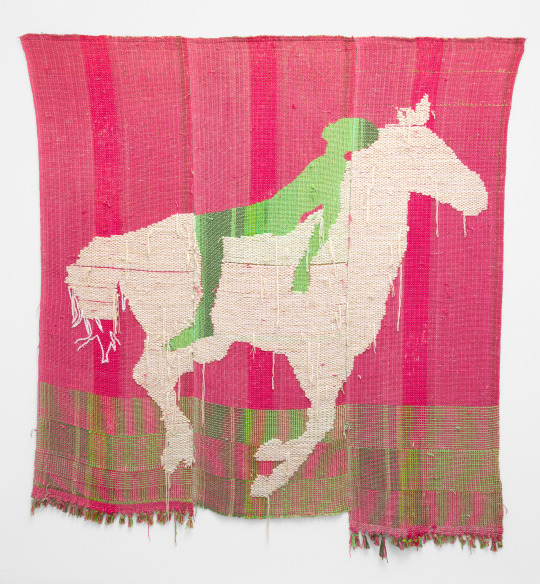
Late Fragment by Raymond Carver From A New Path to the Waterfall, Atlantic Monthly Press, 1989.
And did you get what you wanted from this life, even so? I did. And what did you want? To call myself beloved, to feel myself beloved on the earth.
— Shori Diedrick Brackens (American, born 1989). when no softness came, 2019. Cotton and acrylic yarn. Brooklyn Museum, Purchased with funds given by The LIFEWTR Fund at Frieze New York 2019, 2019.12. © artist or artist's estate
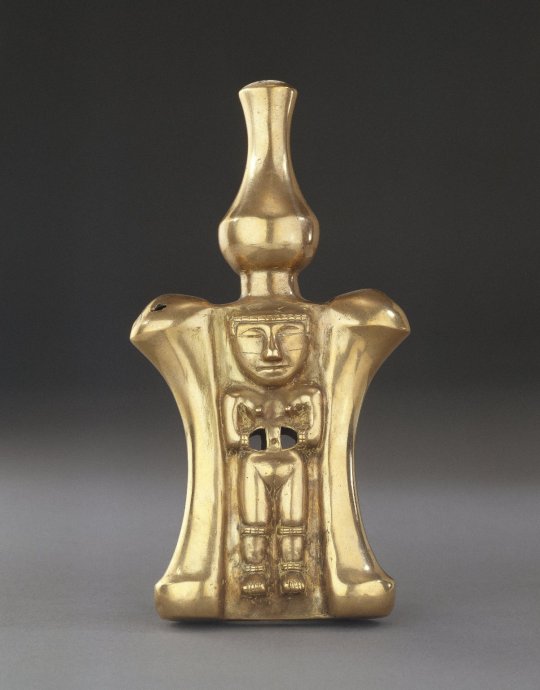
Jaguar By Francisco X. Alarcón
some say dicen que ahora I'm now almost estoy casi extinto extinct in this park por este parque but the people pero la gente who say this que dice esto don't know no sabe that by smelling que al oler the orchids las orquídeas in the trees en los árboles they're sensing están percibiendo the fragrance la fragancia of my chops de mis fauces that by hearing que al oír the rumblingc el retumbo of the waterfalls de los saltos
they're listening están escuchando to my ancestors' el gran rugido great roar de mis ancestros
that by observing que al observar the constellations las constelanciones of the night sky del firmamento
they're gazing están mirando at the star spots las motas de estrellas on my fur marcadas en mi piel that I am and que yo soy always will be y siempre seré the wild el indomable
untamed espíritu silvestre living spirit vivo de esta of this jungle jungla
While the author of the poem speaks about animals, their words can also speak on behalf of the erasure of indigenous peoples in South America. Much like the jaguar, indigenous traditions and culture are very important to life in South America. Despite their marginalization, Indigenous peoples throughout the Andes used coca leaves to help with the altitude. The use and cultivation of coca are criminalized throughout most of South America despite it being essential to indigenous cultures. This vessel was used to contain lime which would activate the coca leaves. Much like the jaguar, indigenous traditions are also faced with endangerment despite being woven into the fabric that is Latin America. Through the opposite man and woman figures, the vessel shows the duality that is important to the Quimbaya people which is still relevant to Colombians today.
Aunque el autor del poema habla sobre los animales, sus palabras también comunican el sentimiento común de la supresión de los indígenas en Suramérica. Con la mención del jaguar, se puede entender en el poema que la cultura y las tradiciones de las personas que son indígenas son sumamente importantes para la vida en Sudamérica. A pesar de su marginación, los indígenas en Los Andes utilizan la hoja de coca para ayudar en la altura de las montañas. El uso y el cultivo de la hoja de coca fue criminalizado (penalizado) a través de Sudamérica, aunque su uso para los indígenas era vital y esencial para su cultura. Este recipiente que se utiliza contiene limón lo que activa la hoja de la coca. Similarmente al jaguar, las tradiciones de los indígenas siempre estaban en peligro aunque estuvieran entrelazadas en las telas de lo que sería Latinoamérica. A través del hombre opuesto y las figuras de mujeres, el recipiente muestra la dualidad de lo que es importante para las personas que son Quimbaya, algo que todavía hoy es relevante para los Colombianos.
— Jeffrey Alexander Lopez, Curatorial Intern, American Art & Arts of the Americas Quimbaya. Poporo (Lime Container), 1-600 C.E. Tumbaga. Brooklyn Museum, Alfred W. Jenkins Fund, 35.507. Creative Commons-BY
116 notes
·
View notes
Photo


Spend your summer at the Brooklyn Museum!
Our summer internship program will run from May 31 to August 5. As an intern, you'll be placed with a supervisor in one of our departments–ranging from Education to Digital Marketing, Exhibitions to Conservation–to gain real-world experience with an opportunity to impact active projects and the future of the Brooklyn Museum. These positions are full-time and paid.
Applications open today and close on April 2.
Learn more about the internship program, supported by our partners at @Citi Foundation. #Pathways2Progress
https://bit.ly/bkminternships
13 notes
·
View notes
Photo



Join a dynamic group of emerging arts professionals to re-envision the future of museums and work on projects that will make a difference at the Brooklyn Museum. As a #BKMIntern you will have the opportunity to learn the tools and workplace skills from experts, and work on a team with full-time staff and interns to help problem solve, and contribute meaningful work. Our goal is to provide interns with training with current methods and tools, assign projects that are tailored to support the personal and professional growth of each intern, and provide spaces for critical dialogue that challenge the role of museums today.
Application deadline for this paid internship program has been extended—apply now!
11 notes
·
View notes
Photo

BKM Intern Success Story: Kinaya Hassane
When did you intern at the Museum and what was your role? I interned at the Museum during the summer of 2019 in the American Art Department. For the duration of the internship, I supported Assistant Curator of American Art Margarita Karasoulas by completing various research projects. Some of these projects included researching previous exhibitions of American art at the Museum, which involved me going to the archives. Others involved me researching individual works and artists in the collection. I also assisted with day-to-day tasks like responding to public inquiries into the collection.
After you left your internship at the Brooklyn Museum you received a full time fellowship at the Library Company of Philadelphia, a non- profit research library concentrating on American society and culture from the 17th and 19th centuries. In what ways did your internship at the Brooklyn Museum prepare you for that internship? I was brought on as a curatorial fellow at the Library Company to assist the curators in the Prints and Photographs Department with researching and conceptualizing their upcoming exhibition, Imperfect History. I’ve found that the projects I did at the Brooklyn Museum were incredibly relevant to the work I’m doing now. The goal of Imperfect History is to critically examine the almost 300 year history of collecting graphic materials at the Library Company and how the institution's collecting practices resulted in the misrepresentation and exclusion of racial minorities, women, and other marginalized people. The internship at the Brooklyn Museum allowed me to think deeply about the relationship between institutions, their collecting histories, and minority groups. That experience has been very useful in my work at the Library Company, which is grappling with many of the same issues.
Where do you want to go from there? My ultimate goal is to pursue a PhD in art history, specializing in American art or art of the African Diaspora. I’d also like to continue down the curatorial path. I think there’s so much work curators and other museum professionals can do to adequately acknowledge the contributions Black people have made to the art historical canon (as artists, subjects, and patrons) and I want to continue to be a part of those efforts.
What was the most memorable moment of your internship? Some of my most memorable experiences included getting to go into storage to see all these wonderful works of art that are tucked away and rarely on view. Getting be in such close proximity to works by artists whom I admire so much reminded me of why I was drawn to art history in the first place.
What is one piece of art that you enjoyed visiting during your time at the museum and what about it inspires you? I really loved visiting Lois Mailou Jones’s Dans Un Cafe a Paris (Lee Whipper). I really admire the work for its aesthetic qualities, but I also love it because it’s among the few historic works by an African American woman in the Museum’s collection. It therefore plays an important role in contextualizing the centuries-long tradition of art making by African Americans, which often gets overlooked in contemporary conversations about Black art.
What advice can you give to someone interested in interning at the Brooklyn Museum? My biggest piece of advice would be to treat this internship (or any internship in the arts for that matter) as a learning opportunity. That might sound pretty obvious, but I think it’s easy to get really absorbed by your day-to-day assignments. Definitely stay on top of your projects, but don’t be afraid to use your time as an intern to branch out and talk to people to learn how they got to where they are now. As a first-generation student, those conversations have been critical in helping me think about my own career path.
Posted by Erika Lively
#bkminterns#paid internships#brooklyn museum#citi foundation#american art#bkmamericanart#curatorial#art careers#art jobs#museums jobs#art history#art#curators#art curators
48 notes
·
View notes
Photo


BKM Intern Success Story: Maribel Vitagliani
Maribel Vitagliani completed the Brooklyn Museum’s paid internship program—funded by the Citi Foundation—during the summer of 2018 in the Department of Egyptian, Classical, and Ancient Near Eastern Art (ECANEA). Immediately after finishing the program Maribel was offered a full-time position in the Museum’s Conservation Lab. Her duties as the Conservation Assistant range from tracking finances and making sure that money being spent on grant projects is on track, to handling art for curators and outside visitors visiting the Lab, and my favorite—helping with projects, like prepping magnets by carefully wrapping them with Japanese tissue for the installation of our LIz Johnston Artur exhibition.
Maribel’s job requires many different types of skills and a range of knowledge, many of which she didn’t know until she started her internship and her full-time job. So what’s the key to Maribel’s success in her internship and current position? Curiosity, tenacity, and not being afraid to ask. Throughout my conversation something that struck me is Maribel’s curiosity about the work that is going on around her.
Don’t be afraid to ask. As an intern in ECANEA Maribel had the opportunity to complete tasks related to rotations (this is when curators switch out one object on display for another). She asked curators, Katya Barbash (Associate Curator, ECANEA), and Ed Bleiberg (Senior Curator, ECANEA) why they were rotating objects out, and what made them decide on the objects they brought in. Understanding the rotation process, as it turns out helped Maribel obtain her current position. Objects need to go off view for a variety of reasons, and some of the most common are related to conservation, for example: paper and textiles are sensitive to light and can only be exhibited for a limited amount of time; and like many other objects in our lives, our objects need to be taken care of over the course of their lives, they get cleaned, and undergo special treatments. “Does the average visitor walk by notice that one pharoah bust has been replaced by a different pharoah?” asked Maribel. Probably not, and that’s not a bad thing. Exhibitions tell stories, and objects are the key ingredient to telling that story; while pharoah busts aren’t interchangeable, similar busts can operate to help tell the same part of an exhibition’s message.
It’s ok if you don’t know how, but don’t be afraid to dive in. Maribel didn’t learn how to do all aspects of her work prior to starting the position. Not being afraid to ask, and seeking out resources has been integral to fulfilling her responsibilities as Conservation Assistant. The most challenging aspect of her work has been her work related to the department’s finances, “I don’t have a background in accounting or finance, through this position one of my biggest areas of growth has been learning how to use financial systems.” When asked how she learned how to do this with no background, “I am lucky I have such great colleagues. I made an appointment with the Finance Department and they walked me through the entire process.” Now I can call them if there is anything I don’t understand and they help me through it.
What advice would you give someone interested in an internship at the Brooklyn Museum? “Definitely apply! Especially if you’re interested in art or museums. Even if you don’t have an art history background. You learn a lot of skills, and it definitely opens doors if you want to continue on in a museum career. If you have an internship, pay attention and ask questions! you wouldn’t know if you didn’t ask.
Posted by Monica Marino
#bkminterns#citi foundation#brooklyn museum#interns#paid internships#museum internships#conservation#egyptian art#museum careers#art museums#brooklyn#bkmeducation
42 notes
·
View notes
Photo
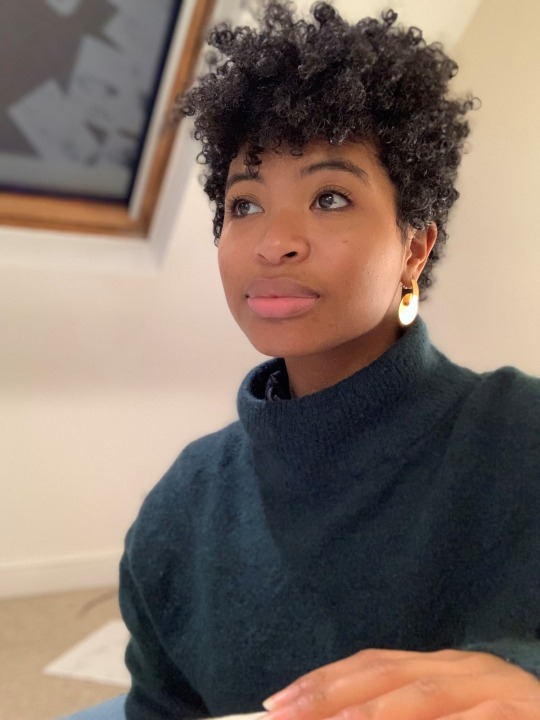
BKM Intern Success Story: Rose Varona Camara
When did you intern at the Museum, and what was your role?
I interned in the Registrar’s Office in summer 2018.
I know that after you left your internship at the Brooklyn Museum you interned in the 20th and 21st century Design Department at the Milwaukee Art Museum in your home city. In what ways did your internship at the Brooklyn Museum prepare you for that internship?
Working in the Registrar’s Office was really valuable because it’s truly a behind the scenes look at how a museum prepares for exhibitions. At the Milwaukee Art Museum, I was able to witness the formulation of an exhibition from a curatorial point of view, but my experience at the Brooklyn Museum put that point of view into perspective. Without the Registrars and Conservators, these great exhibitions, temporary or permanent, that the public enjoys wouldn’t be able to happen. I feel that I began my internship at the Milwaukee Art Museum with a well rounded knowledge of curatorial practice. This is in part due to knowledge of how the Registrar’s office operates.
Where are you now?
I'm in my final week of grad school at The Courtauld Institute of Art in London. I’m studying Renaissance Italian Art. In my dissertation I intend to focus on the African Diaspora within visual art of the 14th and 15th Century Italy (though the specificity of my dissertation hasn’t been hashed out yet.)
I love graduate school. I really do! There's freedom in studying a specialized subject and I look forward to going to my classes every week. Its engaging and challenging but in a good way! London has so much to offer as well. It's similar to New York in that there's always something to do and see and innumerable places to go (and eat). One can never be bored here - especially if one is interested in the visual arts.
Where do you want to go from there?
After leaving the museum and now in my studies I would say that my desire to have a career in an encyclopedic art museum is still my plan. Specifically, since being at the Brooklyn Museum I have realized that I would like a leadership role. Whether that be head of a department, curator, director, etc. I want to talk to people and teach people about why art is important, what it can do for the world, and what it has done historically, among other things.
Additionally, I want to break down the elitism surrounding these institutions.
Lastly, I want to be part of a future of museum professionals who want to keep art museums honest and representative of their surrounding communities. Because I can go on about it at length, I’ll just say that there’s much work to be done in art museums, still, to bring them up to speed in the 21st century.
What was the most memorable moment of your internship?
I couldn’t limit it to just one moment. Spending evenings walking across the Brooklyn Bridge, watching swing dancers outside the Brooklyn Public Library, attending a screening of West Side Story in Prospect Park, and generally exploring New York City with great friends that I made during the internship are at the top of my list. Mixed with the multiple "field trips” to art museums around the city including The Whitney and CitiBank - summer 2018 made for a whole slew of memorable moments.
What is something that you love about the Brooklyn Museum?
The exhibitions that the Museum puts on have been stellar. Being in the Registrars office, I was involved in the deinstallation of Radical Women: Latin American Art, 1960-1985. I also witnessed the opening of David Bowie Is. As my internship was coming to a close, the Registrars Office was preparing for the forthcoming exhibition Soul of a Nation: Art In the Age of Black Power.
What advice can you give to someone interested in interning at the Brooklyn Museum?
Be curious! The Citi Internship offers opportunities to see the art world from several angles. Take advantage of all of them. There could be an aspect of the art world that you had no idea about prior to the internship.
Posted by Monica Marino
#bkminterns#paid internships#citi foundation#bkmeducation#registrar#art museums#brooklyn museum#bkmcareers#nyc#brooklyn#internships#art careers#museum careers
39 notes
·
View notes
Photo


Each week the Brooklyn Museum Summer Interns participate in full-day educational programs that explore the roles of museums through on-site visits and field trips to other institutions around the city. Look out for our weekly posts where we’ll share what we’re doing and learning in the program.
Week 2: We kicked off our inaugural Tuesday of educational programming gathered around a table in our home-base studio. There we returned to the essential questions Erika and Monica, our program coordinators, posed to us on our first day at the museum one week before: What does it mean to be a responsive museum? Should the Brooklyn Museum strive to be responsive? These are the framing themes of our summer, queries we will revisit every Tuesday from various approaches.
From the studio we headed upstairs to the Elizabeth A. Sackler Center for Feminist Art to explore Nobody Promised You Tomorrow: Art 50 Years After Stonewall. Exclusive access to the galleries on Mondays and Tuesdays, when the museum is closed to the public, is a pretty extraordinary perk of the job. We moved through the space silently, each focused on reconstructing the essential question of the exhibition through its rallying and vibrant works. Back in the studio we reflected together. Cheyenne, a summer intern in the Development Department, shared her interpretation of the exhibition’s mission: to offer a means of commemoration and celebration of a historically invisible group in a gradually accepting era.
We bounced back to earth from our orbit of theoretical conversation to engage in a visual thinking workshop with facilitator and artist Ebon Heath. Ebon brought the energy. In the Beaux-Arts Court we created mind maps using various mediums. The exercise was introspective and allowed the interns, a generally creative bunch, to go off artistically. Our third mind maps grew out of a guiding question or goal in our lives. My map revolved around the question “What am I passionate about?” with off-shoots that featured the guest stars of my anxieties, “Do I have to be good at what I like?” and “Do I have to like what I’m good at?”

Wiped out from existential exploration, we refueled with lunch at the picnic tables. The olive baguette and rosemary braided loaf Erika brought us from her baker neighbor helped. Still, I overheard the adjacent table discussing whether preserving art was a valuable endeavor on an ever-deteriorating and ultimately doomed earth.
The vibe got back on track during our afternoon visit to the Museum’s Libraries and Archives where we unanimously agreed that preserving art and historical records makes for some unique discoveries. We sifted through correspondences, magazines and records from the museum’s history that BKM archivist Molly had pulled for us with the theme of responsiveness in mind. I especially enjoyed a 1930s complaint letter detailing the shenanigans of a pack of hooligan boys on the roof of the Brooklyn Children’s Museum.



We finished the day with an observation exercise in Kwang Young Chun: Aggregations. We sat around Kwang Young Chun’s Aggregation 15 - JL038, a 3-D conglomeration of mulberry paper triangles that create a meteorite-like shape and that echoes a slightly offbeat iambic beat. We listened first, then looked. In our reflection we compared what we saw in the piece, some calling it a planet, an organ, a cityscape. Monica closed the day by posing a final question: How is knowledge constructed? Exhausted by a long day of thoughtful engagement, we decided to leave the question for next Tuesday. We’ve got plenty to think about until then.
Posted by Ginger Adams
#bkminterns#art#museum#brooklyn#stonewall50#internship#intern#nobodypromisedyoutomorrow#brooklyn museum#heritage#kwangyoungchun#aggregations#art history#stonewall#students#visual thinking#bk#nyc
183 notes
·
View notes
Photo

Intern spotlight: William Satloff, Collections Department.
I arrived at the Brooklyn Museum on a sunny morning in early June. Still healing from a brutal week of final exams, I had not yet prepared myself for the first day of my internship in the Museum’s Marketing and Communications Department. I was so unprepared that I felt no nerves at all– no butterflies, no sweaty palms. I hoped for a peek into the inner workings of a large arts institution and to engage in meaningful work. My internship experience fulfilled both these wishes, and gave me a gift I could have never anticipated. Through thoughtful and passionate conversations, my fellow interns have changed my relationship with museum spaces. The interns take on a variety of responsibilities in departments across the museum, bringing their commitment and drive to every corner of the building. William Satloff is an intern in the Collections Department. This is what he shared about his role:
— Ginger Adams
I’m William Satloff, the Brooklyn Museum summer intern tasked with inventorying and conservation-grade repackaging boxes of commercial textiles. I work primarily with textiles related to L. & E. Stirn — cloth merchants that set up shop in NYC in the 1890s. Because most of the materials I handle are more than a hundred years old, they’re often dusty and sometimes completely disintegrated.
First I protect my nose, mouth and lungs with a particle respirator; then I cover my hands with latex exam gloves. (The gloves are also to protect the paper and textiles from the oils on my hands!) Then I’m ready to get to work.
Each box has roughly 2,000-3,000 textile swatches and samples. To process all that, I’ve developed a routine to get through one box every four days. To lay it out for you... First I unpack the box — removing each item one-by-one, inspecting for any labels or tags, taking note of format and dimensions.


As I make my way through the box, I group the items in categorical stacks, considering what types of categories would be helpful to someone archiving the materials in the future. I subsequently write a brief description for each stack on a slip of paper that will stay with its respective materials through the packaging process. Next, I photograph examples from the most interesting categories (i.e. reflective sheers, metallic thread embroidery) to represent the box’s contents.
Then I type a categorical inventory, outlining what companies, fabric and paper formats, and types of textiles (i.e. stripes, plaids, sheers) are in the box. I print the inventory and photographs to include in the repackaged boxes. After that, I wrap each category up in archival materials so they can be stable in a box for 10-15 years, or more. This step includes measuring and cutting acid free board to support the paper-backed specimens, sealing loose textiles in polypropylene bags with twill ties, and more. Finally, I pack the materials back into their original box. Usually I need to find better housing and expand to a second box when repacking because the conservation materials increase the total volume of the contents.


It’s a lot of steps, but it’s really fun. I get to handle the art as opposed to looking at it behind a glass case. Because of the work I’m doing, these historic textiles will get a life beyond collecting dust and falling apart in some storage area. I’m given the independence and responsibility to make decisions about how this set of the Museum’s objects will be received by future collectors, curators, and conservators. I was hoping my internship would give me an opportunity to see how a major museum really functions and to get practical, hands-on experience with a key part of museum operations — this summer’s experience met and exceeded those expectations.
Posted by William Satloff
#bkminterns#brooklyn museum#bkm#arts intern#museum intern#intern#brooklyn#nyc#nycsummer#brooklynsummer#bk#bk summer
76 notes
·
View notes
Photo



Each week the Brooklyn Museum Summer Interns participate in full-day educational programs that explore the roles of museums through on-site visits and field trips to other institutions around the city. Look out for our weekly posts where we’ll share what we’re doing and learning in the program.
Week 6: The BKM summer interns filed into the boardroom Tuesday morning for another packed day of programming. As someone more wooed by prestige than I’d care to admit, convening in the boardroom tickled my fancy. Esther Woo, Exhibition Project Manager in the Curatorial and Exhibitions Department, met us there to give us a run-down on her role and responsibilities. Esther’s presentation complemented those of our previous speakers from across the Museum in consolidating a holistic understanding of how the Museum functions day to day. As Project Manager, Esther handles the logistics imperative to producing exhibitions on time and in budget.

After running over time with questions, we hurried down from the boardroom to meet Drew Sawyer, Phillip Leonian and Edith Rosenblum Leonian Curator of Photography, at the entrance of Garry Winogrand: Color. Drew walked us through the exhibit, which I had not yet seen and which I plan on returning to for as long as I can later today. He spoke about Winogrand’s life, his artistic intentions and values, his focus on content-based interpretation. Drew then led us out of Winogrand’s curtained cave of a gallery and into Liz Johnston Artur: Dusha, another photography exhibit on view at the Museum. Liz Johnson Artur’s work juxtaposes Winogrand’s, inviting a comparison between the contemporary, female, Russian-Ghanaian artist’s approach to life photography and Winogrand’s.

After Drew’s walk-through we found refuge from the Museum’s aggressive air-conditioning at the picnic tables. We gobbled down a quick lunch and met back up in front of the museum to board a train (actually, three trains) uptown. Our first field trip of the summer was to the New York Historical Society on the Upper West Side. A representative from the institution's education department greeted us and ushered us through Love and Resistance: Stonewall 50 at the New York Public Library. Unlike the Brooklyn Museum’s Nobody Promised You Tomorrow: Art 50 Years After Stonewall, which we visited together during week 2 of our internship program, the NYHS exhibit presents an artifact-centered historical narrative of LGBTQ+ activism from the 1960s through today.

After our tour we wandered freely throughout the NYHS. We gathered by the entrance and crossed the street to settle on the southern-facing stairs of the Natural History Museum. Under the shade of trees and across from a from a fountain surrounded by pigeons and running toddlers with plastic dinosaurs in hand, we reflected on the exhibit and our day. Our discussion flowed to the Guggenheim’s Mapplethorp exhibit we were assigned to visit independently and summated in the question: Can an exhibit be comprehensively inclusive? How? Maybe in the following closing weeks of our summer we’ll begin to address the pool of questions that have arisen since week 1. Probably we’ll leave with more.

Posted by Ginger Adams
#bkminterns#museums#art careers#museum careers#internships#paid internship#summer#brooklyn#nyc#art museum#brooklyn museum#winograndcolor#lizjohnsonartur
75 notes
·
View notes
Photo



Each week the Brooklyn Museum Summer Interns participate in full-day educational programs that explore the roles of museums through on-site visits and field trips to other institutions around the city. Look out for our weekly posts where we’ll share what we’re doing and learning in the program.
Week 8: The BKM interns gathered in the Glass Pavilion on our third to last Tuesday of the summer. The morning was cooler than any in recent memory, a change many interns celebrated in sweatpants and long-sleeves (also worn in observation of our day away from the office). We split from there to continue working our group presentations. We will share our completed projects, in which we will propose interventions for the Cane Acres Plantation house on the museum’s fourth floor, in two weeks.
We reconvened in the boardroom, whose walls, I’m sure, have never enclosed so many t-shirts. There we discussed the value of mentorship and the steps we, as young actors tip-toeing into the working world, can take to build constructive relationships with mentors we admire.

We then migrated to the Arts of Asia to meet Joan Cummins, the Lisa and Bernard Selz Senior Curator of Asian Art. Joan, a former BKM intern herself (!!), walked us through the spaces that will come to hold the Museum’s Indian, Chinese, and Japanese art collections, as well as the already open Arts of Korea. She spoke to the nuanced challenges of her role, which include curating antiquities for a modern audience and grappling with unresolved provenance. Also funding. Joan shared how her academic training in art history and her personal experience prepared her for her position, the likes of which today might require formal knowledge of museum studies and curatorial theory.

Per tradition, we ran overtime with questions. After concluding with Joan, we broke for lunch. I felt somewhat personally duped that I could not escape the viscous air-conditioning of the galleries in the courtyard. Food helped me, so did conversation with my fellow interns who never cease to amaze me with their intelligence and wit.

After lunch we gathered outside One: Titus Kaphar and Rembrandt to Picasso: Five Centuries of European Works on Paper to hear from Lance Singletary, Director of Exhibition Design, who has been at the Museum for 15 years. An interest in how interior design and architecture control individuals’ psychological experiences in covert ways has rented out space in my mind this summer, so I was particularly excited about this conversation. Lance guided us through the space, explaining the process of exhibition design and the various actors involved. He shed light on the selection of wall colors and the sequences in which pieces hang.


We followed up our chat with Lance by meeting three of the Museum’s art handlers– Filippo Gentile, Senior Art Handler/Supervisor Museum Maintainer, Aisha De Avila-Shin and Richard Fett, both Art Handlers and Assistant Museum Maintainers. Filippo identified working intimately with art as the ever-rewarding joy of his job. In Eric N. Mack’s Lemme walk across the room, he discussed helping living artists achieve their vision, and upstairs in Pierre Cardin: Future Fashion, he and Aisha divulged some industry secrets related to securing hats onto mannequin heads.

We then traveled to the auditorium (coldest location of the day) for a conversation with Keonna Hendrick, School Programs Manager and Michael Reback, Senior Museum Instructor/Teacher Services coordinator. We discussed the fundamental role of the Museums' Education and Public Programs departments in its function as a responsive body (invoking to our summer’s framing question: “What is the responsive museum?”). We shared our visions for the democratization of museum access, which to us seems to hinge on improved representation within those in power.
This conversation spilled into our closing reflection, which, characteristically, ran late. Before clocking out for the day, we traded poem, song, artist, and book recommendations. Homework for next week.
Posted by Ginger Adams
#bkminterns#bkm#brooklyn#brooklyn museum#interns#museum#art#museum interns#art interns#summernyc#nyc#bk#pierrecardinbkm#ericnmack#onetituskaphar#bkmworksonpaper#artsofkorea
30 notes
·
View notes
Photo

Each week the Brooklyn Museum Summer Interns participate in full-day educational programs that explore the roles of museums through on-site visits and field trips to other institutions around the city. Look out for our weekly posts where we’ll share what we’re doing and learning in the program.
Week 4: Week 4! A collective amazement at the speed at which our summer is whizzing by and a lingering soreness from the adjustment to 9-5 life charged the energy of our reunion Tuesday morning. Gathered around a table in Studio 2, we shared scandalous accounts of writing mid-summer progress reports and highlights from our weekends (which included swimming in the ocean and eating ice cream). We opened the morning with a discussion about the role of museums in exposing invisible histories and creating accessible and inclusive spaces. Kikesa, an intern in the Office of the Chief Curator, identified the importance of presenting artists of color not in isolation but in conversation with their predecessors and historical context. Inga, Public Programs intern, spoke to the responsibility of museums as transmitters and writers of history. This group of interns doodles the best doodles.
We then moved independently through One: Titus Kaphar, privileged as ever by our gallery access on days close to the public. The exhibit pairs Titus Kaphar’s Shifting the Gaze with the museum’s collection show of European works on paper, a marriage that challenges its visitors’ perception of the masterful European prints and drawings. We then sat down with the exhibitions’ curators Eugenie Tsai and Lisa Small. Eugenie and Lisa offered us a peek into the processes involved in producing shows as well as valuable nuggets of life advice. We followed up the conversation with a quick exercise that tasked us with brainstorming and presenting an engaging program for the exhibit targeted at college students. Fabiola, intern in the Registrar’s Office, and I envisioned plexiglass canvases and expo marker positioned in front of the works on paper inviting students to physically shift the gaze with their own revisions.


Lunch conversation at the picnic tables included critiques of the Whitney Biennial and a good price for an aura reading.

After lunch we reassembled into our groups to continue our assignment from last week. The activity asked us to explore a permanent gallery and devise an intervention for the space. Celia (Conservation), Eliza (Director’s Office) and I headed back up to Arts of Korea and lost ourselves in conversation about the delicacy of presenting artists’ personal and dear creations.
We met back up with the larger group in the boardroom (fancy!) for a visit with Tracey Reese, Chair of the museum’s Collections Committee. Tracey walked us through the strategies involved in acquiring and deaccessioning art and how these strategies differ between museums according to their respective missions and contexts. Tracey also shared some poignant wisdom with us. She noted after our introductions (name, college, major, department) the discrepancies between many of our academic focuses and our departments. She advised us to treat work like romance—to work with people we admire and to leave when we aren’t. Gorgeous doodles happening everywhere.

Before the day’s closing reflections, three groups led us through galleries to propose the interventions they had conceptualized. A crowd favorite was an AR app developed for the Luce Visible Storage Center that would allow guests to see objects in their context by pointing their camera at particular pieces. The app would also give visitors the chance to curate and share their own exhibits with pieces from the gallery.

We ended the day back in the studio, sharing final thoughts and observations. Another day of insight into the Museum’s operations, another day of being blown away by my fellow-interns. We’ll be back in two weeks after a vacation for the holiday!
Posted by Ginger Adams.
38 notes
·
View notes
Photo

Each week the Brooklyn Museum Summer Interns participate in full-day educational programs that explore the roles of museums through on-site visits and field trips to other institutions around the city. Look out for our weekly posts where we’ll share what we’re doing and learning in the program. Week 10: The Brooklyn Museum summer interns gathered for our final day of educational programming this Tuesday. We met up in Manhattan, a strange but fascinating land, in the plaza of Citigroup’s TriBeCa complex.
We convened there, accompanied by David Berliner, the Brooklyn Museum’s Chief Operating Officer, to hear from Citi representatives. The Citi Foundation has generously sponsored a cohort of interns at the Brooklyn Museum for two consecutive summers. The program strives to facilitate diversification in the arts field by offering paid summer opportunities to a growing number of participating museums.


We admired Citi’s space-craft of a building, which looked more like the realization of an architectural rendering than any space I have ever visited, as we made our way to the 39th floor. There we filed into a stunning meeting room with panoramic views of Manhattan’s downtown skyline. Our first guest was Vice Chairman of Citi, Ray McGuire. After recovering from the initial shock of his presence, my awe at Ray grew as we learned of his accomplishments in the art world. Our conversation with Ray centered the social role of museum spaces as responsive institutions and the rewards his personal involvement in the arts has brought into his life.
Next we heard from a panel of Citi employees intended to illuminate arts related career opportunities in for-profit contexts. The panelists included Suzanna Gyorgy, Managing Director of Citi Private Bank Art Advisory Services, Mary Kate O’Hare, Vice President of Citi Private Bank Art Advisory Services, Sarah Richardson, Global Head of Citi Center for Culture and Anuar Juraidini, Vice President of Citi Foundation. They spoke about curating in corporate and private settings and shared much appreciated career advice.

Lunch was a wild scene. Citi’s cafeteria is a wonderland. Voucher in hand, I ogled the bountiful options for so long I barely had time left to eat. In no time we were stepping out into the heat of downtown Manhattan, cramming into a train and setting off to Brooklyn.

Back home at the museum, we met Kristen Windmuller-Luna in One: Egúngún. Kristen serves the museum as Sills Family Consulting Curator of African Arts. She walked us through the careful installation of the Yorùbá masquerade dance costume and told us of her journeys to Nigeria where she connected with the garment’s original family. Upstairs in the boardroom, Kristen presented on the responsibilities of a curator and answered our various questions.
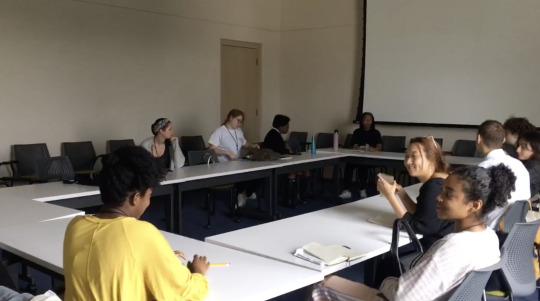
We then traveled downstairs to the Beaux-Arts Court to hear from a panel of interns-turned-museum employees. They shared their experiences shifting from interns to full time employees and, in theme with the day, their most valuable career advice.
In the transition period before our closing activity, the interns congregated in the small pool of sunlight spilling into the Beaux-Arts Court. We had reserved the boardroom for our final discussion, but the warmth of the sun-pocket compelled us to request a change of plans. Outside in the courtyard, we pulled two picnic tables together and began sharing our informal group presentations. Monica and Erika, our program advisers, had asked us to envision interventions in the Cane Acres house. We spoke about revising didactics and repurposing the space. Our final Tuesday of programming came to a bittersweet close. The organic friendship that arose among the interns, facilitated by these Tuesday sessions, has been one of the most valuable gifts from our summer at the museum. We were comforted by remembering it was not goodbye and that we had three more days of hallway encounters and impromptu lunches to share. I hope my fellow interns will be my coworkers one day soon.
Posted by Ginger Adams
#bkminterns#interns#museum#museum interns#artinterns#art#citi#citifoundation#bk#nyc#ny summer#bk summer#summer internship#internship#brooklyn museum#bkm#oneegungun
21 notes
·
View notes
Photo



Each week the Brooklyn Museum Summer Interns participate in full-day educational programs that explore the roles of museums through on-site visits and field trips to other institutions around the city. Look out for our weekly posts where we’ll share what we’re doing and learning in the program.
Week 7: On Tuesday morning the BKM summer interns gathered in the reading room of Nobody Promised you Tomorrow. Reclining with morning-slump into our low chairs, we stretched into our morning with a conversation about the commodification of activism. We discussed the controversial sponsorships of last month’s pride march and the trend of corporations adopting and appropriating models of activism for their own capitalistic gain. We collectively recognized that growing up in the age of technology has desensitized us to what in the Stonewall era struck audiences as shocking acts of rebellion.

Two of the exhibition’s curators, Margo Cohen Ristorucci, who serves the Museum as Public Programs Coordinator, and Lindsay C. Harris, Teen Programs Manager, joined us in the reading room (which they named “our house”) to walk us through the show’s conception. Five individuals from three departments across the museum collaborated up to produce the show, which celebrates New York based LGBTQ+ artists born after the year 1969. The team’s democratic curatory vision is clear in its execution. The space wraps you up in a vibrant and comforting weighted blanket. After in-depth dives into the pieces that most called out to us, Erika (intern program co-coordinator) notified us we had spilled into our lunch time.

At lunch I slumped my deepest slump of the day into a rainbow net chair in the courtyard. Digging into our leftovers and take-out, we discussed our favorite exhibitions at the Museum and our plan to share our personal creations with one another in the auditorium, an effort spearheaded by Public Programs intern Inga.

After lunch we had time to work on our group presentations, the culminating projects of our summer at the Museum. The assignment is to craft and propose an update to the Museum’s Cane Acres Plantation House in light of our summer’s guiding question, “What does it mean to be a responsible museum?” We roamed the (possibly haunted) exhibition together and dreamed up some pretty radical ideas… stay tuned.

We then boarded an uptown train headed towards the Museum of the City of New York. Chaos took hold and we ended up arriving in three separate groups, allowing those of us in the first chunk to browse the air-conditioned store and chat about Euphoria. Reunited eventually, we wandered through the Museum’s Pride: Photographs of Stonewall and Beyond and The Voice of the Village: Fred W. McDarrah Photographs exhibitions. We finished the day reflecting on the approaches to social responsiveness available to different types of museums (fine arts, historical, natural history, etc.).

End-of-day-slump creeped in and we ambled out of the Museum and into the uptown heat. Next week we’re sticking close to our air-conditioned home and switching gears to explore the museum’s antiquities and exhibition design. Check back for updates!
Posted by Ginger Adams
#bkminterns#nobodypromisedyoutomorrow#stonewall50#stonewall#design#brooklyn museum#interns#internships#museums#art careers#museum careers#museum internships#museum interns
26 notes
·
View notes